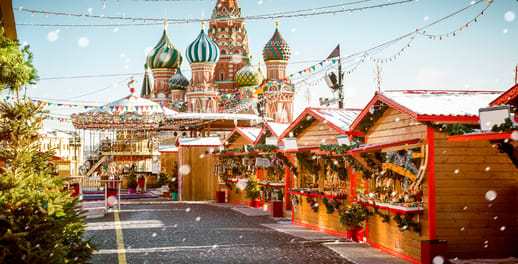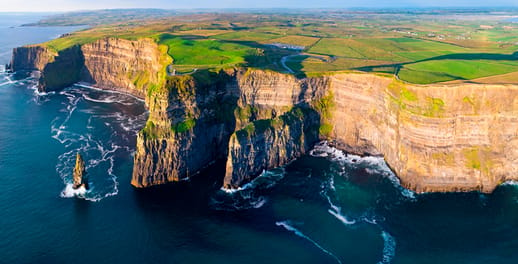Art reflects its time. From realism to the contemporary, art offers us a glimpse into a particularly time in history and the artist’s interpretation thereof.
Professor in Visual Culture Studies (Department of Visual Arts, UP), Amanda du Preez comments,
“Art can be considered to be ideas in a visual form, therefore the term image (or imago in Latin) refers to the imagination and conceptual understanding of the world in a visual form. Art is thus a useful barometer of how we both imagine and see the world.”
Here is an overview of eight art styles that in some form continue to define the art world.
Realism
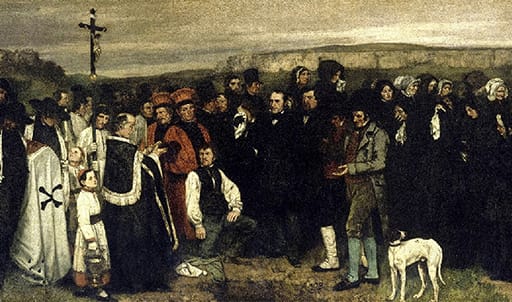
A Burial at Ornans, by Gustave Courbet
Realism was an artistic movement that began in France after the 1848 Revolution, led by Gustave Courbet.
Realism revolted against the exaggerated emotion and drama of the Romanticism movement. Realists sought to portray real people of all classes in various situations truthfully and did not avoid any unpleasant or sordid aspects of normal life. The popularity of ‘realistic’ works grew with the introduction of photography.
Impressionism
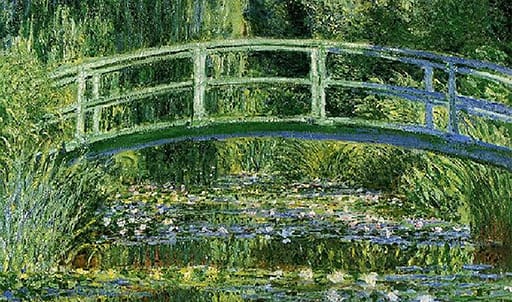
Water Lilies and Japanese Bridge, by Claude Monet
Impressionism originated with a group of Paris-based artists (Claude Monet, Pierre-Auguste Renoir, Alfred Sisley and Frédéric Bazille), who were considered radicals of their time.
Impressionist painters moved away from realistic representations and academic painting. They aimed to capture the momentary, sensory effect of a scene - the impression objects made on the eye. They used visible brushstrokes and vivid colour to capture the emotion of light and movement.
Prof du Preez adds, “The name of the style derives from the title of a Claude Monet work, Impression, soleil levant (Impression, Sunrise), which provoked the critic Louis Leroy to coin the term in a satirical review published in the Parisian newspaper Le Charivari.”
Post-impressionism
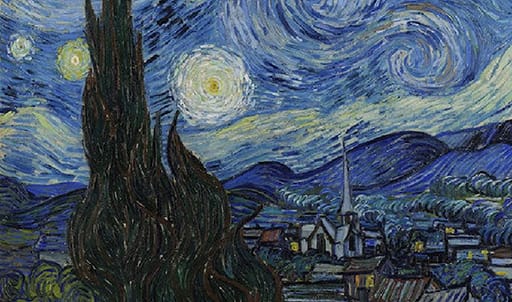
The Starry Night, by Vincent van Gogh
Post-Impressionism is a predominantly French art movement that developed in the late 1800s as a response to the Impressionist movement.
“It extended Impressionism while rejecting its limitations. The paintings transcended its traditional role as a window of the world (outward looking) and became a window into the artist's mind and soul (inward looking),” says Prof du Preez.
Artists used real-life subject matter with vivid colours and thick application of paint. They also used abstract elements and symbolic content, emphasise geometric forms, distort form for expressive effect and use unnatural colour.
The movement was led by Paul Cézanne, known as father of post-impressionism. Perhaps the most well-known post-impressionist is Vincent van Gogh, who used colour and his brushstrokes to convey his state of mind.
Cubism
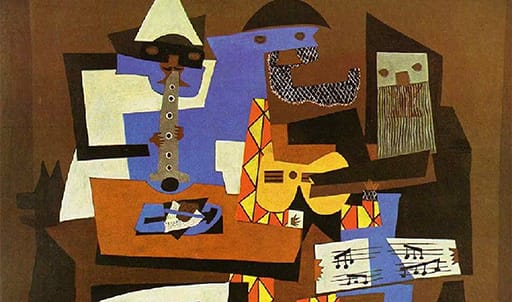
Three Musicians by Pablo Picasso
Cubism is truly revolutionary style of art, pioneered by Pablo Picasso and Georges Braque in the early 1900s and inspired related movements in literature and architecture.
“The movement was inspired by developments in the sciences with the advent of interest in the fourth dimension, or time. Therefore, Cubism aimed to paint not only in three dimensions but also opted to incorporate the fourth dimension by showing simultaneous angles in time. Reality is distorted but the aim was in fact to broaden our vision by also seeing objects in time,” Prof du Preez remarks.
Completely breaking with any previous art movement, objects were analysed and broken apart, then reassembled into an abstracted geometric form. Instead of depicting objects from a single viewpoint, the artist depicts the subject from a multitude of viewpoints.
Artists wanted to emphasise the two-dimensionality of the canvas. Minimal lines and shapes were part of the simplification or abstraction, which also trickled down into a limited colour palette.
Cubism opened the doors for later art movements, like Surrealism and Abstract Expressionism, by throwing out the prescribed artist's rulebook.
Surrealism
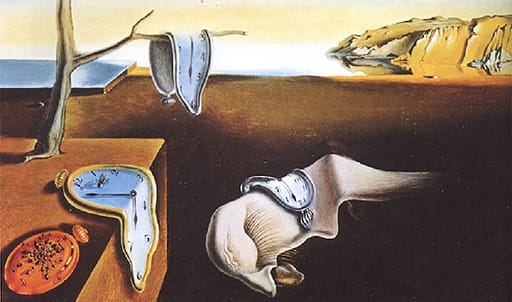
The Persistence of Memory by Salvador Dalí
Surrealism is an avant-garde movement that began in the early 1920s which sought to release the creative potential of the unconscious mind, for example by the irrational juxtaposition of images.
Prof du Preez notes, “The developments in the field of psychoanalysis played an enormous role in Surrealism. Without Freud and Breuer’s research into the human psyche and dreamworld, Surrealism would probably not have existed.”
Surrealists like Salvador Dalí often challenged perceptions and reality in their artwork. Part of this came from the juxtaposition of a realistic painting style with unconventional and unrealistic subject matter.
It created strange creatures from everyday objects and developed painting techniques that allowed the unconscious to express itself.
From the 1920s onward, the movement spread around the globe, eventually affecting the visual arts, literature, film and music as well as political thought and practice, philosophy and social theory.
Abstract expressionism
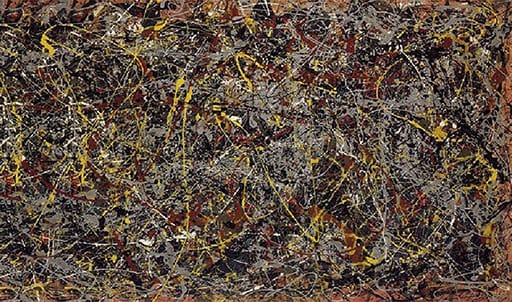
Number 5, 1948 by Jackson Pollock
Developed in the 1940s and 1950s after World War II in New York, abstract expressionism is an American art movement - the first to explode on an international scale.
The movement comprised many different styles varying in both technique and quality of expression. Jackson Pollock is considered the leader of the movement, work from Willem de Kooning and Mark Rothko also fall under this umbrella.
These artists shared an interest in using abstraction to emphasize free, spontaneous and personal emotional expression. It’s best known for large-scale paintings that break away from traditional processes, often taking the canvas off of the easel and using unconventional materials such as house paint.
Pop art
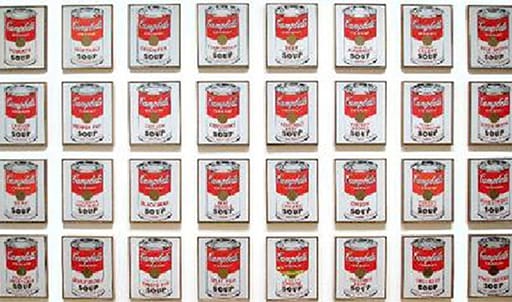
Campbell's Soup Cans by Andy Warhol
Rising up in the 1950s in Britain and the United States, Pop Art is a pivotal movement that heralds the onset of contemporary art.
This movement challenged traditions of fine art by including imagery from popular and mass culture, such as advertising, comic books and mundane cultural objects. One of its aims is to use images of popular (as opposed to elitist) culture in art, emphasising the banal or kitschy elements of any culture.
Andy Warhol, the most famous figure in Pop Art, explored the relationship between artistic expression, celebrity culture and advertising that flourished by the 1960s. It spanned a variety of media, including painting, silkscreening, photography, film and sculpture.
Prof du Preez elaborates, “No longer did the artist look towards nature for inspiration but got inspiration from culture and the imagery available in mass culture specifically. The art work also no longer represents a window onto the world, but becomes a flat surface obsessed with mere appearances.”
Contemporary art
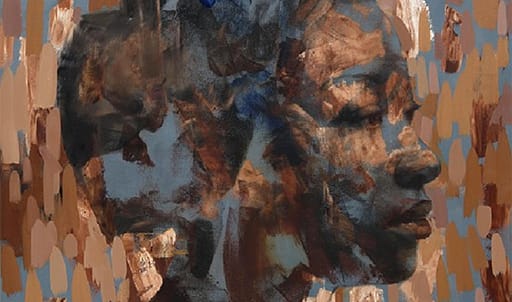
Disperse Series, Lionel Smit
Contemporary art refers to art - namely, painting, sculpture, photography, installation, performance and video art - produced in the second half of the 20th century or in the 21st century.
Contemporary art is part of a cultural dialogue within larger contextual frameworks such as personal and cultural identity, family, community and nationality. It is globally influenced, culturally diverse and a dynamic combination of materials, methods and subjects that continue to challenge the status quo.
Diverse and eclectic, contemporary art as a whole is distinguished by the very lack of a uniform, organising principle, ideology, or ‘-ism’.
“This is one of the outstanding characteristics of the contemporary art scene, namely that one can no longer refer to or identify big movements such as ‘Abstract Expressionism’ or ‘Surrealism’. In fact, all these movements now exist simultaneously. Another outstanding trend is that the boundary between the art work and the every day is suspended. It becomes increasingly difficult to tell art and life apart,” Prof du Preez concludes.


